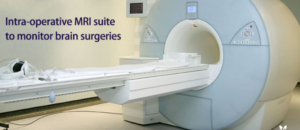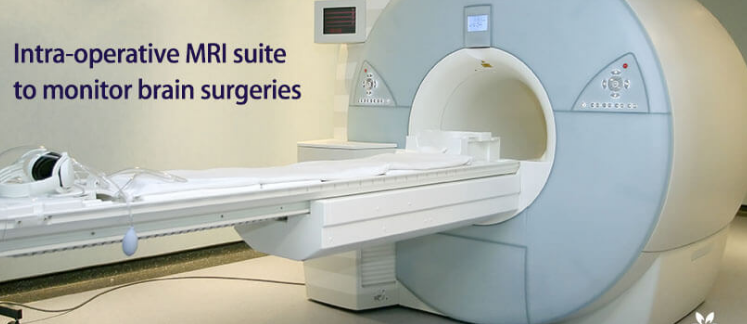Intraoperative MRI: Recent Advances and Implications for the Future of Neurosurgical Navigation
Intraoperative MRI is a quantum leap in the field of neurosurgery. It enables surgeons to view detailed images of the brain during surgery, enhancing their capability to make intraoperative decisions. This technology enhances precision and helps ensure better outcomes for patients undergoing complex brain procedures.
As the technology of intraoperative MRI progresses further, so do the capabilities toward advanced surgical navigation. Such medical advancements will allow surgeons to check on the area improvements their operations have made, reducing the risk of missing a crucial area of operation. This may change the playing field of surgeries with hopefully shorter recovery periods.
These tools allow surgeons to obtain the most accurate data possible. As a result, it enables safer surgery with the possibility of better patient outcomes. It is without doubt that neurosurgical navigation will be more dependable in the future with such innovations.
Key Takeaways
- Intraoperative MRI increases precision in brain surgery.
- Real-time imaging reduces the occurrence of surgical errors.
- Future advancement aspires to provide safer surgical outcomes with better patient results.
Advancing Intraoperative MRI
Intraoperative MRI technology has rapidly evolved over the past several years. These developments improve surgical results and enhance the precision of neurosurgical operations. High-field MRI, intraoperative real-time imaging, and sophisticated instrumentation represent major advancements.
High-Field Intraoperative MRI
High-field intraoperative MRI systems revolutionized the thinking of surgeons when it came to operating on brains. These are systems capable of higher magnetic field strengths, usually 3 Tesla or more. The increased strength allows higher image quality and greater detail.
High-resolution images increase the ability of neurosurgeons to visualize critical structures and tumors better. This clarity is vital for safety and effectiveness: it allows neurosurgeons to navigate during operations with high accuracy. With many high-field intraoperative MRI facilities, patient outcomes usually improve too, like reduced complications and shorter recoveries.
Real-Time Image-Guided Surgery
Real-time image-guided surgery incorporates MRI scans into the surgical arena in real time. This functionality enables surgeons to visualize images instantly as the procedure progresses. RIGS enables observation of changes made on the site of operation without necessarily leaving the operating room.
Live images allow for strategizing and lead to superior decision-making in which surgeons can directly evaluate the reaction of the tumor to their action and may make any necessary immediate modifications. This type of feedback in real-time can achieve heightened levels of precision that may translate into higher-quality surgical outcomes.
Innovations in Neurosurgical Instrumentation
Recent advances in neurosurgical equipment also complement intraoperative MRI. New devices and technologies are designed to interface well with MRI systems. For example, MRI-compatible instruments minimize image distortion and thus allow clearer visuals.
With the use of robotics and navigation software, there is also an increase in precision within surgery. These tools will offer targeted actions with more accuracy and lower risks than the traditional methods could provide. The more the instrumentation evolves, the effectiveness and safety neurosurgical procedures become.
Implications for Neurosurgical Navigation
This kind of surgical intraoperative MRI technology will have important implications for neurosurgery with respect to enhancing surgical precision and ensuring safety. Intraoperative MRI helps surgeons in visualizing brain structures during the time of surgery, thereby facilitating more appropriate decisions in the operation. However, there are also many challenges that are involved, and potential impacts on its use need consideration.
Enhanced Surgical Precision and Patient Safety
Intraoperative MRI gives surgeons the right imaging in real time. This helps in better navigation towards tumors and other areas of the brain that are considered critical. Constant visualization reduces the possibility of damaging healthy tissue.
Improved precision has a direct impact on patient outcomes. With better navigation, there is less chance of complications and more complete tumor resections. This procedure might also reduce the number of repeat surgeries, further improving overall safety for the patients.
Challenges and Considerations
However, it also has challenges in intraoperative MRI. The high costs and the large space it occupies may limit its availability to only certain hospitals. In addition, this technology requires specialized training from the surgical team.
One of the probable issues to be faced is time constraints during surgery. It is very important for integrated systems to be efficient to avoid delaying the surgery. Preserving the imaging quality of the MRI during surgery is not an easy task; careful management is needed.
Future Directions in Neurosurgical Techniques
Advancement in the future may provide intraoperative MRI with increased capability. It is also possible that better automation may enhance workflow and therefore decrease surgery time. Software innovation may provide clearer images, thus helping surgical decisions.
Integration with other technologies, including robotics, could become common. The enhanced feedback that surgeons will get during operations could result in better outcomes. Ongoing research would establish how such improvements can best be applied in clinical practice.

Also Read :
- Functional MRI and Brain Mapping in Neurosurgical Decision-Making
- Advanced MRI Sequences in Neurosurgical Interventions
- MRI for Spinal Cord Injury and Neurosurgical Treatment
- Functional Connectivity Mapping in Preoperative Neurosurgical Planning
- Intraoperative MRI : Revolutionizing Neurosurgical Precision
